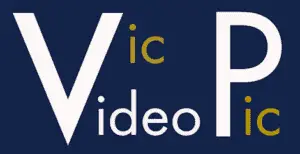The DJI Flip is a versatile drone offering some capabilities for autonomous flying and close-range vlogging. However, in my opinion, it is, first of all, an excellent, affordable model for videography and photography
The direct competitor in the DJI lineup is the Mini 3, priced similarly. I have already compared the two models for videography
In this article, I will put them face to face for photo quality and functionalities. The links above are affiliate, therefore I receive a small commission in case of purchase that helps this blog going
Othe related articles you might find interesting:
- DJI Flip photography
- DJI Flip camera settings for photography
- Mini 3 vs Mini 3 Pro for photography
- Flip vs Mini 3 for videography
Features
| Sensor size | 1/1.3″ |
| Aperture | f 1.7 |
| Field of view | 24 mm |
| Photo resolution | 12 MP (24 MP mode available) |
The two models share the same camera with a 1/1.3” sensor, a field of view equivalent to 24mm, and a fixed aperture of f 1.7, wider than any other DJI model
The true photo resolution is 12 MP, but a 48 MP mode is also available. It is obtained by splitting each pixel into four smaller ones
This 48 MP mode was added to the Mini 3 after a few months via firmware update. It is useful for large prints and deep crop, but it is more demanding in terms of computer resources
Hyperlapse mode is available only in the Flip. You can read my article here. For many users, this can be a deciding factor for the Flip over the Mini 3
Panorama mode is available in both models, although the Mini 3 doesn’t offer vertical panorama
The camera of the Flip cannot rotate vertically to take photos in portrait mode, like the Mini 3. However, this feature is not as important for photos as it is for footage, as it is possible to crop an image to vertical orientation without a noticeable loss of resolution
Both models have an HDR photo mode, but the Flip can take seven images versus only three for the Mini 3. In images taken in high dynamic range situations, generally against the sun, it is possible to use some editing programs to merge the images to HDR. The seven images of the Flip deliver excellent results
I use Luminar Neo, my favorite editing program for photos, you will find info about it together with a discount coupon (code: vicvideopic) here. You can read my article about it
There are a few other minor differences between the two models:
- The Flip has a wider range of shutter speed values from 1/1600 up to 8 seconds of simulated long exposure, versus 1/8000 to 2 seconds for the Mini 3. The longer exposure is useful in urban situations, using the drone as a regular camera positioned on a level surface for creative shots
- The Flip has a maximum ISO value of 6400 for 12MP photos versus 3200 for the Mini 3. However, high ISO values are not needed for still images, as the wide aperture of the lens can gather plenty of light
Video Quality
Since the two models share the same camera, we might expect them to produce images of the same quality. However, it is not the case, as the image processor and the algorithm play an important part
The Mini 3 Pro and the Mini 3 were the first drones equipped with this camera. The image quality was a big step forward compared to previous DJI lightweight models, but there was room for improvement in detail, contrast, and color rendition
To fully exploit the camera’s potential, DJI introduced a new image processor in the Mini 4 Pro, the same fitted in the Flip. In the three years since the Mini 3 release, DJI has tweaked the algorithm several times to optimize image quality
All images are taken in RAW format and exported to JPEG, they were shot in the same places with similar light conditions, although not one after the other, as I generally do, as sadly, my Mini 3 is currently not working
Watching them face to face, I notice more detail, richer colors, and better structure of the sky in the ones taken with the Flip
In images taken in the direction of the sun, a situation very hard to handle, both models perform well, without chromatic aberrations or flares. However, once again, the Flip has much more detail and contrast
In low-light images, the difference in quality in favor of the Flip is even more evident. It is hard to believe that the Flip’s photos were taken in low light, but, believe me, it was very dark
I have noticed that in low light, the Mini 3 gets better results by merging three images to HDR
